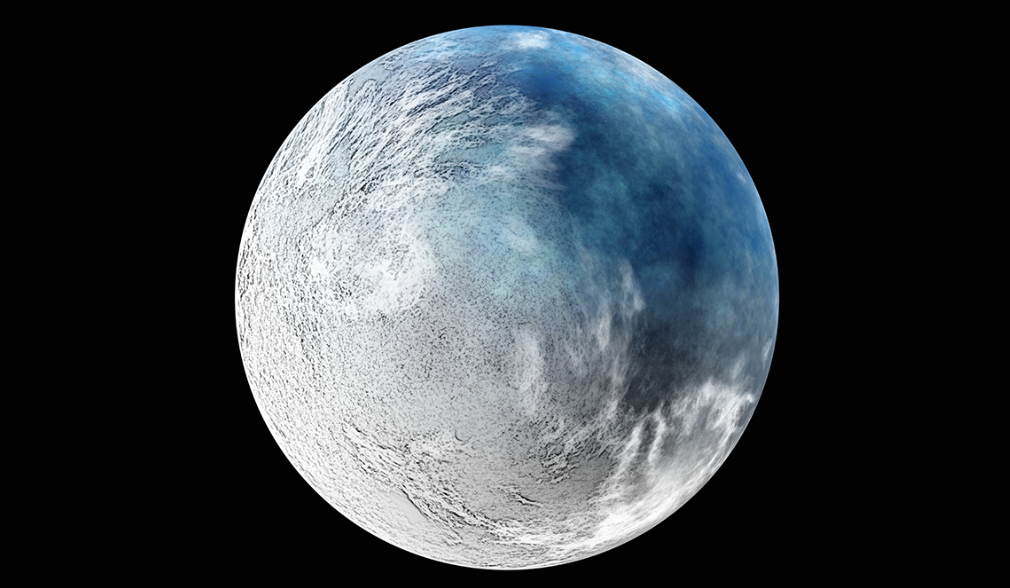In the past, asteroid impacts could trigger a global ice age called “Snowball Earth.”


The research team laid out on the table new theory in the discussion aboutsnowball earth“about the possible reason deep freezes across the planet happened in the distant past.
According to their new study, these earthly periods called “snowball”in which the surface of the planet was covered with ice for thousands and even millions of years, could have been suddenly caused by the collision of large asteroids with the Earth..
Findings detailed in the journal Science achievementsmay answer a question that has puzzled scientists for decades about some more dramatic climate changes famous in the history of the Earth. In addition to Yale University, the study included researchers from the University of Chicago and the University of Vienna.
The collision of an asteroid with the Earth led to the almost complete freezing of the Earth
Climate modelers have known since the 1960s that if Earth cooled enough, the high reflectivity of its snow and ice could create a “runaway” feedback loop that would lead to more sea ice and cooler temperatures until the planet became covered in ice. . These conditions occurred at least twice during Earth’s Neoproterozoic era, between 720 and 635 million years ago..
However, attempts to explain what started these periods of global glaciation, which became known as “snowball earth“, were not final. Most theories focused on the idea that greenhouse gases in the atmosphere somehow decreased to such an extent that a snowball began.
“We decided to explore an alternative possibility,” said the lead author. Mingming FuRichard Foster Flint is a research fellow in the Department of Earth and Planetary Sciences at the Yale School of Arts and Sciences. “What would happen if an extraterrestrial influence caused a very abrupt transition to climate change??”
For the study, the researchers used a complex climate model that represents atmospheric and oceanic circulation, as well as sea ice formation, under different conditions. This is the same type of climate model that is used to predict future climate scenarios.
In this case, The researchers applied their model to the aftermath of a hypothetical asteroid impact. in four different periods of the past: Pre-Industrial (150 years ago), Last Glacial Maximum (21,000 years ago), Cretaceous (145 to 66 million years ago) and Neoproterozoic (1 to 542 million years ago).
For the two warmest climate scenarios (Cretaceous and pre-industrial period), researchers found that It is unlikely that an asteroid impact could trigger a global ice age..
If it weren’t for the scripts Last Glacial Maximum and Neoproterozoicwhen the Earth’s temperature may have already been low enough to constitute an ice age, An asteroid impact could send the Earth into a snowball state.
“What surprised me most about our results is that, given sufficiently cold initial climatic conditions, a “snowball” state can develop within just a decade after an asteroid impacts the world’s oceans.“said the co-author Alexey Fedorov, Professor of Oceanic and Atmospheric Sciences at the Yale School of Arts and Sciences. “By then, the thickness of sea ice at the equator will reach about 10 meters. This should be compared to the typical sea ice thickness of one to three meters in the modern Arctic.“.
Relatively the likelihood that in the coming years Period”Snowball Earth caused by an asteroidthe researchers said this is unlikely, partly due to to anthropogenic warming this has led to a warming planet, although other consequences can be just as devastating.
Co-authors of the study are Dorian Abbott of the University of Chicago and Christian Köberl of the University of Vienna.
Link
Minming Fu et al. The emergence of a Snowball Earth from an impact: a modeling study, Science Advances (2024). DOI: 10.1126/sciadv.adk5489. www.science.org/doi/10.1126/sciadv.adk5489
